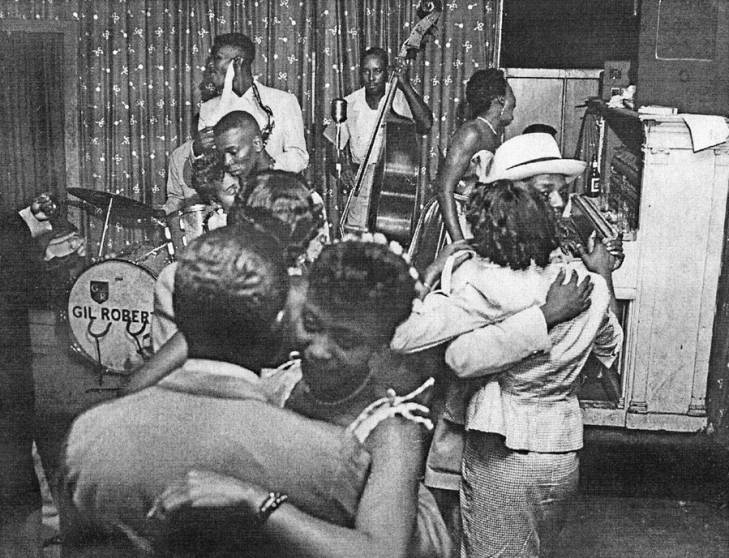A Culture of Fame
From the 1940s to the 1960s, Akron was absolutely rich with the culture of jazz, boasting the appearance of famous musicians such as Cab Calloway, Duke Ellington, Tommy Dorsey, Ella Fitzgerald, Ray Charles, and a slew of others. Initially, this may be surprising due to perceptions of the Akron we think of today–it’s a small city in the Midwestern United States, filled with the ghosts of a rubber industry that is far from its peak.
However, Akron has what was, at the time, an extraordinary advantage. That is, it is located fairly equidistantly between New York City and Chicago, two of America’s cultural centers. There was actually a train station in Akron called the Union Depot, which was a key stop between Chicago and New York from 1891 to 1950. As a result of this–and, according to jazz club owner Tony Troppe, Akron’s comparatively low cost of lodging and living–many famous musicians passing through from one city to the other ended up stopping to stay and perform in Akron. At the time, the greatest of the jazz clubs were located on Howard Street. Some of these more famous clubs included the Green Turtle, the High Hat, the Cosmopolitan, and Benny Rivers.

Hotel Matthews and Segregation
The Hotel Matthews monument stands near the original Howard Street and Martin Luther King Boulevard in downtown Akron. Made of red brick, a single green door, and a barbershop light, the monument serves as the sole physical reminder of the jazz era on Howard Street. An inscription on the monument reads, “A Monument To A Man… A Time… And a Place.” During a time of racial segregation, Howard Street was a place where blacks and whites could coalesce at jazz clubs and set aside their differences. Not only that, but Howard Street was also home to many of the city’s black-owned businesses and has been described as “the center of African-American culture in Akron during the mid-20th century.” Thanks to George Mathews, owner of Hotel Matthews on Howard Street, famous black musicians had a place to stay when no other hotels in town would rent them a room.

Declining but Not Gone
As the rubber industry declined in Akron, Howard Street and the city’s jazz culture also declined. When a portion of Howard Street was demolished near downtown in the early 1970s to make way for the Innerbelt Freeway, the last of the city’s jazz culture seemed to go with it. However, in an interview with UA Director of Jazz Studies and renowned trumpeter Jack Schantz, there has been a recent resurgence of jazz culture in Akron. Young graduates of The University of Akron School of Music are staying in the area due to popular venues such as Blu Jazz.
Check out these audio snippets of interviews with Jazz musicians who performed in Akron from the Cascade Locks Park Association‘s CD, Hot Jazz: The Legends of Howard Street.
- Bobby Atchison on getting a jazz gig on Howard Street
- Pee Wee Carter came to Howard Street from Canton
- Jimmy Noel discusses piano player Joe Bradley
- Roland Paolluci establishes jazz program at UA
- “You can be a part of the movement called jazz.”
Researched and written by Sonia Potter & Kevin Rickly with Anthony Greenaway
Sources
- “Big Ray Charles Concert at the Akron U Memorial Hall.” Akronite Tabloids. Opie Evans Papers. Folder 39. May 9, 1963.
- Opie Evans Papers. Folder 8: Photographs of Black Entertainers.
- Tony Troppe, interview, October 23, 2019.
- Jack Schantz, UA Director of Jazz Studies, interview, November 4, 2019
Stempak, Nicole (March 5, 2019). - “Akron Jazz: A Resonating Sound.” Akron Life Magazine.
- “Interviews,” Jimmy Noel, Roland Paolucci, Punchy Atkinson, Bobby Atchison and Pee Wee Carter, 2004, Cascade Locks Park Association, Track 12 on Hot Jazz: the legends of Howard Street, 2005, CD.
- Summit History (2018). Historic Akron Sites. The Summit County Historical Society of Akron, Ohio. Retrieved from https://www.summithistory.org/historic-akron-sites.
